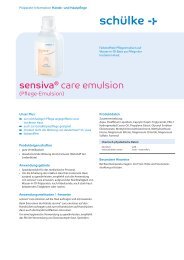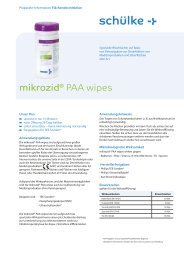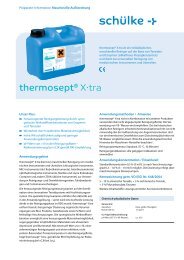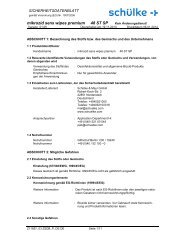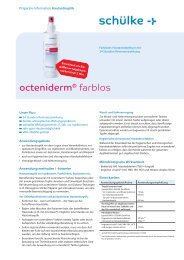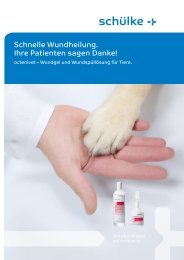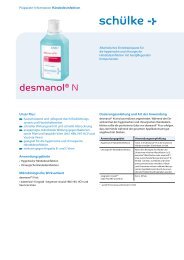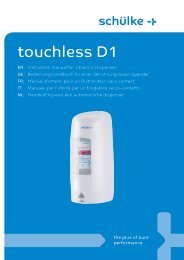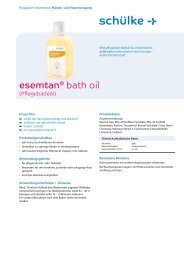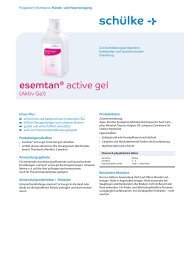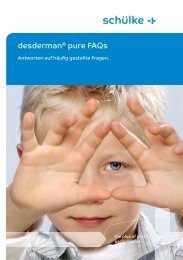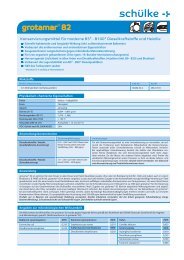Medical skin care - Schülke & Mayr
Medical skin care - Schülke & Mayr
Medical skin care - Schülke & Mayr
Create successful ePaper yourself
Turn your PDF publications into a flip-book with our unique Google optimized e-Paper software.
16<br />
Additional information<br />
Explanations regarding cosmetic active ingredients*<br />
A large number of active materials from all possible<br />
substance classes are available in cosmetology<br />
today. All of these substances have at least a physical<br />
effect. A prerequisite is that these substances<br />
must, in most cases, penetrate the <strong>skin</strong>, which is<br />
difficult because the <strong>skin</strong> is primarily a protective<br />
organ. It is desirable that other substances remain<br />
on the surface of the <strong>skin</strong> (e.g. targeted occlusive<br />
action, <strong>skin</strong> protection).<br />
One of the most important “active systems” is the<br />
product base. On the one hand it can deploy an<br />
effect directly, e.g. hydrating, while on the other<br />
hand it determines, as carrier medium, the interactions<br />
between <strong>skin</strong> and active ingredient. Whether<br />
an active ingredient has a positive effect or little<br />
effect is, in many cases, determined by the base<br />
(bioavailability). Even a deactivation is conceivable.<br />
On the other hand, active-ingredient-free bases<br />
have an effect as well.<br />
The comfrey plant contains allantoin.<br />
Allantoin acts by accelerating cell<br />
growth, cell reproduction and cell<br />
regeneration and calms the <strong>skin</strong>. It also<br />
promotes healing of stubborn wounds.<br />
But also a formulation applied to the <strong>skin</strong> is on no<br />
account absorbed unchanged.<br />
Only certain constituents can penetrate more<br />
deeply (due to mixing with sebum and sweat, by<br />
“breaking” an emulsion and by chemical-physical<br />
reactions in the horny layer).<br />
Egbert Charlet, Cosmetics for pharmacists,<br />
Wissenschaftliche Verlagsgesellschaft mbH, Stuttgart, 1989<br />
From the diversity of cosmetic active ingredients,<br />
the substances used in esemtan® and sensiva®<br />
products are described in pages 17 and 18.<br />
Thereby, the effectivity of the complete formulation<br />
cannot be unconditionally inferred from the<br />
effectivity of a single substance. On the one hand,<br />
this is certainly dependent on the concentration<br />
that is used for each and, on the other hand, on<br />
the properties of the respective base and thus its<br />
bioavailability.<br />
* Definition “Cosmetic active ingredient” (Umbach, 1985)<br />
“Substance in cosmetic preparations with physical, physicochemical, chemical, biochemical and / or subject-based action under conditions<br />
of use, for, among other things, the influencing of physiology and / or function of <strong>skin</strong> and/or mucous membranes and their adnexa as well<br />
as the teeth with as large an exclusion of a systemic effect on the organism as possible.“



